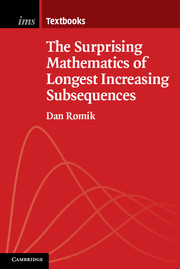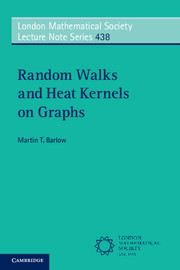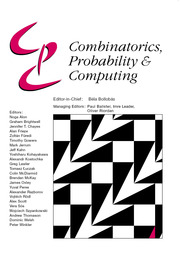Random Walks and Discrete Potential Theory
This book covers the interplay between the behaviour of a class of stochastic processes (random walks) and structure theory. Written by leading researchers, this collection of invited papers presents links with spectral theory and discrete potential theory, besides probabilistic and structure theoretic aspects. Its interdisciplinary approach spans several areas of mathematics including geometric group theory, discrete geometry and harmonic analysis, and will be of interest to researchers and post-graduate students, both in mathematics and statistical physics.
- First comprehensive text on the subject
- Contains up-to-date research
- Contributors are leading names in the field
Product details
No date availableHardback
9780521773126
371 pages
237 × 157 × 24 mm
0.62kg
18 b/w illus.
Table of Contents
- 1. Green's functions, generalized first eigenvalues and perturbation of diffusions or Markov chains Alano Ancona
- 2. Random walks on graphical Sierpinski carpets Martin T. Barlow and Richard F. Bass
- 3. Percolation perturbations in potential theory and random walks Itai Benjamini, Russell Lyons and Oded Schramm
- 4. Twist surfaces Robert Brooks
- 5. Harmonic functions on buildings of type Ãn Donald Cartwright
- 6. Spectre d'opérateurs différentiels sur les graphes Yves Colin de Verière
- 7. Analysis on infinite graphs with regular volume growth Thierry Coulhon
- 8. On the asymptotic spectrum of random walks on infinite families of graphs Rostislav I. Grigorchuk and Andrzej Zuk
- 9. Stochastic pin-ball Geoffrey R. Grimmett
- 10. A discrete time Harnak inequality and its applications Vadim A. Kaimanovich
- 11. Multifractal nature of two dimensional simple random walk paths Gregory F. Lawler
- 12. Energy and cutsets in infinite percolation clusters David Levin and Yuval Peres
- 13. On discrete groups and pointwise ergodic theory Amos Nevo
- 14. Random walk and isoperimetry on discrete subgroups of Lie groups Christophe Pittet and Laurent Saloff-Coste
- 15. Distance distortion on Lie groups Nicholas Th. Varopoulos.









